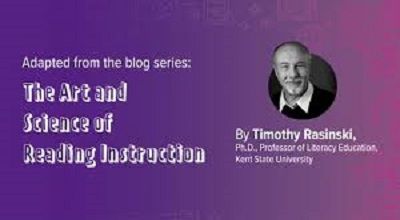Artfully Teaching the Science of Reading
Teaching the science of reading artfully involves blending the rigorous, evidence-based principles of reading instruction with creative and engaging teaching methods. The science of reading is a well-established framework that emphasizes phonemic awareness, phonics, fluency, vocabulary, and comprehension. Here are some artful ways to teach the science of reading:
Phonemic Awareness and Phonics:
- Interactive Games: Use games like rhyming bingo or word ladder puzzles to make phonemic awareness and phonics fun.
- Phonics Stories: Create or use stories that incorporate specific phonics rules to make learning engaging.
Fluency:
- Read-Alouds: Model fluent reading through expressive read-aloud sessions. Encourage students to follow along with you.
- Reader’s Theater: Have students perform short plays or scripts, focusing on reading with expression and fluency.
Vocabulary:
- Word Maps: Use visual word maps to explore the meanings, synonyms, antonyms, and context of new vocabulary words.
- Context Clues: Incorporate stories where students can deduce the meaning of unknown words from the context.
Comprehension:
- Socratic Seminars: Encourage critical thinking by discussing comprehension questions in a group setting.
- Visual Representations: Ask students to create diagrams, storyboards, or drawings that represent key concepts from the text.
Multi-Sensory Learning:
- Kinesthetic Activities: Incorporate movement and touch into lessons, such as tracing letters in sand or using magnetic letters.
- Sensory Stories: Use props or sensory experiences to make stories come alive and reinforce comprehension.
Technology Integration:
- Interactive Apps: Utilize educational apps and online resources that offer engaging, interactive reading activities.
- Digital Storytelling: Have students create digital stories, integrating technology with reading comprehension.
Literature Selection:
- Diverse Texts: Choose a variety of texts from different cultures and genres to engage a broader range of students.
- Student Choice: Allow students to select some of the reading material to increase their engagement.
Creative Projects:
- Book Reviews: Encourage students to write and present book reviews to their peers, fostering a love for reading.
- Character Portraits: Have students create artwork or character profiles to connect with the text.
Real-Life Application:
- Field Trips: Visit libraries, bookstores, or author talks to connect classroom learning with the real world.
- Community Involvement: Engage in reading-related community service projects, such as reading to younger children.
Growth Mindset:
- Celebrate Progress: Emphasize the importance of effort and perseverance in learning to read.
- Goal Setting: Encourage students to set reading goals and track their progress.
Final Words
Remember, teaching the science of reading should be a balanced approach that incorporates both systematic and explicit instruction in foundational reading skills and fosters a love for reading and literacy. By combining artful and engaging teaching methods with the science of reading, you can help students become proficient readers who are excited about exploring the world through books.
